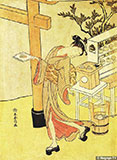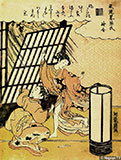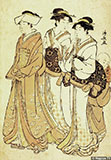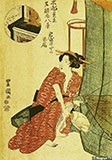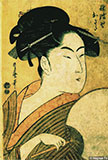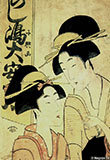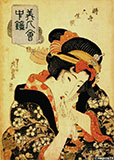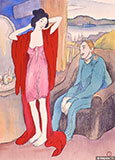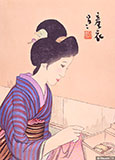作品一覧 人物
Portrait
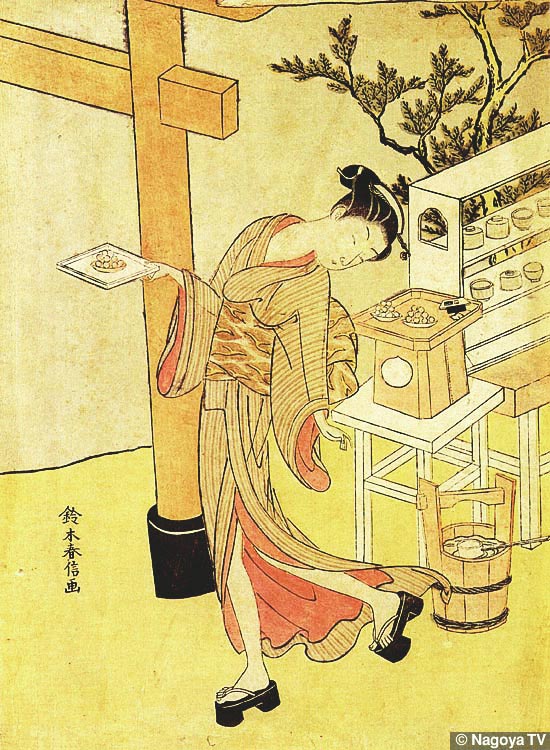
笠森お仙 鈴木春信(すずきはるのぶ 1725-1770)
Osen the tea-shop waitress Suzuki, Harunobu (1725-1770)
鈴木春信は、普通の市井の女性を、浮世絵のジャンルに加えた。この女性は、江戸の笠森稲荷の水茶屋の娘、美貌で人気を誇ったおせんである。
Harunobu Suzuki turned the common woman into a separate genre of Ukiyo-e. This girl is Osen, a tea-shop waitress in Kasamori Inari of Edo who was boasted of her beauty.
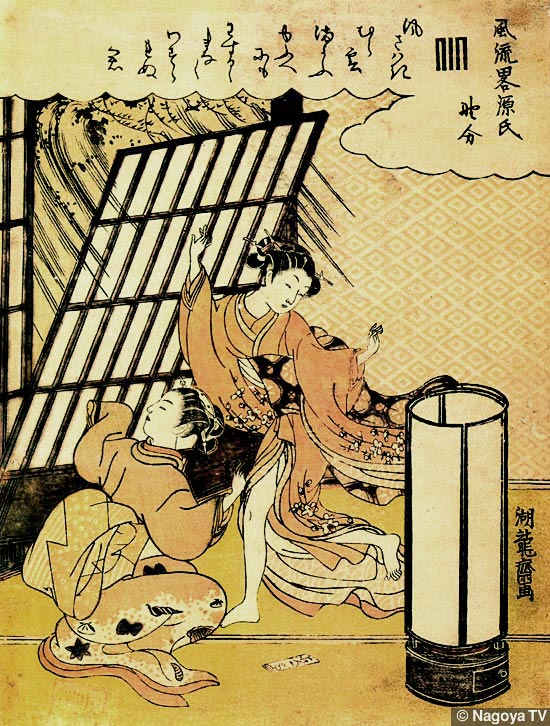
風流畧源氏 野分 礒田湖龍斎(いそだこりゅうさい 18世紀後半)
Typhoon Isoda, Koryusai (late 18th century)
野分(=台風)の強風に障子があおられあわてて押さえている。そんな時でも恋しい人のことは忘れられないという歌が添えられる。
They are trying to hold on to the paper door as a typhoon blows it around. But even during such a time, a song about an unforgettable loved one is attached.
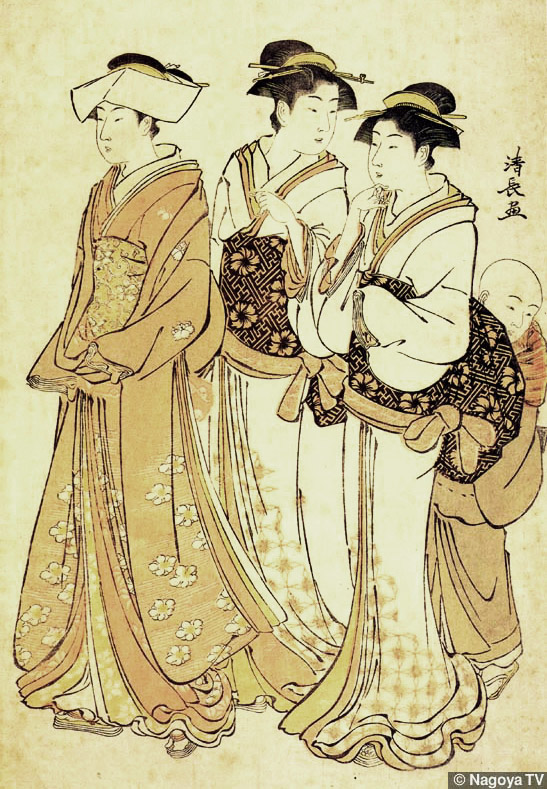
三美人 鳥居清長(とりいきよなが 1752-1815)
Three beauties Torii, Kiyonaga (1752-1815)
歌麿に少し先行する鳥居清長の描く女性たちは、長身で、すらりとした姿に描かれる。連れだっての外出の姿は健康そのものである。
The women that Kiyonaga Torii, who preceded Utamaro, depicts are tall and slender. The form of the three together are nothing but of a state of good health.
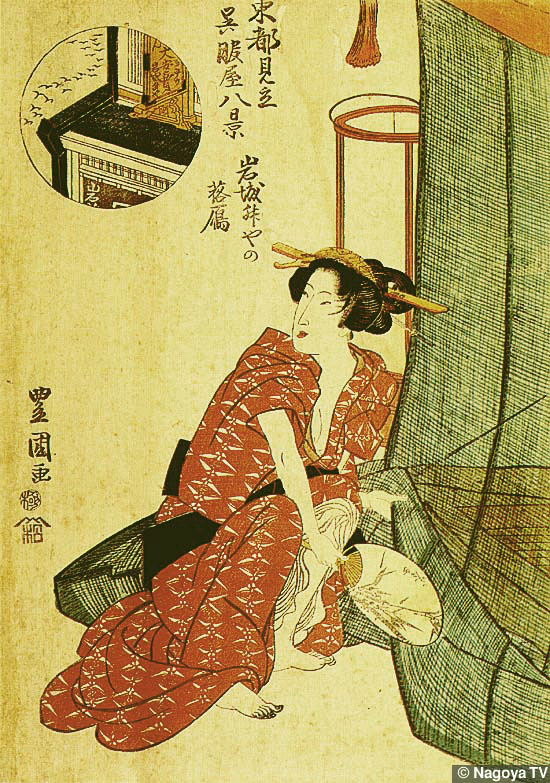
東都見立呉服屋八景 岩城升やの落雁 歌川豊国(うたがわとよくに 1769-1825)
Wild geese landing at Iwakimasuya from the series " Eight views of kimono merchants" Utagawa, Toyokuni (1769-1825)
今ではすっかり姿を消したが、蚊帳は夏の風物詩。団扇を手に蚊帳に入ろうとする女性のすねがあらわに見える。浮世絵師のサービスか。
They are now rarely seen, but mosquito nets remind us of summer. The woman's leg is exposed as she enters the mosquito net with her fan in her hand. Perhaps it is the service of the artist.
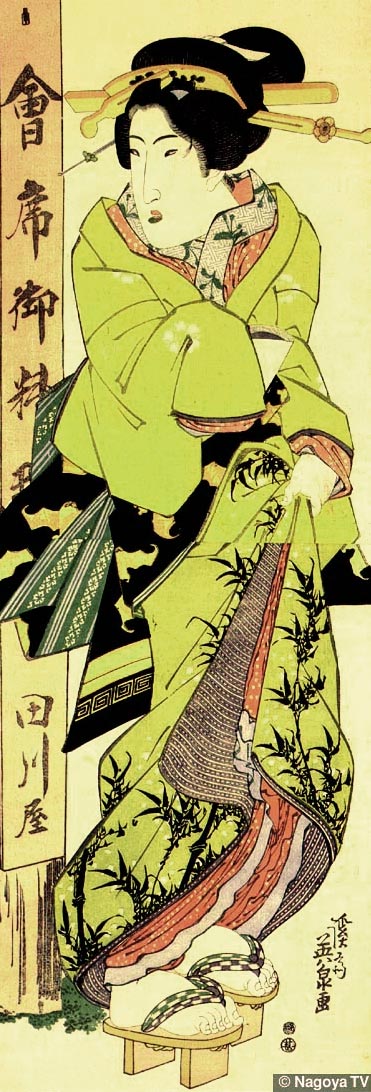
田川屋前の美人 溪斎英泉(けいさいえいせん 1791-1848)
A beauty standing in front of the Tagawaya Keisai, Eisen (1791-1848)
背に猪首、玉虫色の口紅を着ける女性は、英泉特有の女性描写だが、華やかな色使い、女性のポーズなど、毒々しさが抑えられた秀作である。
The stoop shouldered thick necked woman wearing iridescent lipstick, which is Eisen's typical portrayal of a women, is an excellent piece of which the gorgeous colors, and the women's pose subdue all acrimony.
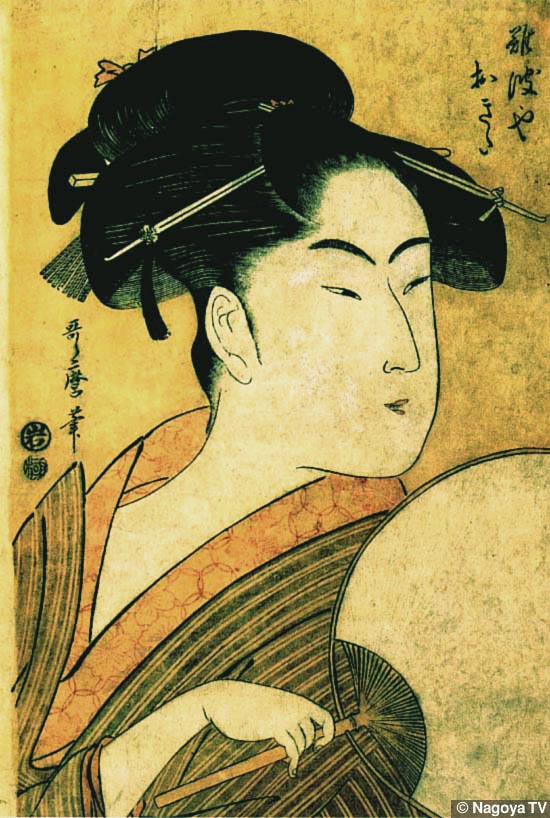
難波やおきた 喜多川歌麿(きたがわうたまろ 1753-1806)
Okita, the waitress of the Naniwaya tea-shop Kitagawa, Utamaro (1753-1806)
浮世絵には当時人気の女性が描かれたものである。歌麿描くこの女性は、浅草随身門の水茶屋の娘おきた。当時15歳のういういしい姿である。
Popular women of that time were the subjects painted in Ukiyo-e. This woman that Utamaro has depicted is Okita, the waitress of a tea-shop of the Zuishin gate in Asakusa. It is of her when she was 15, in her unsophisticated years.
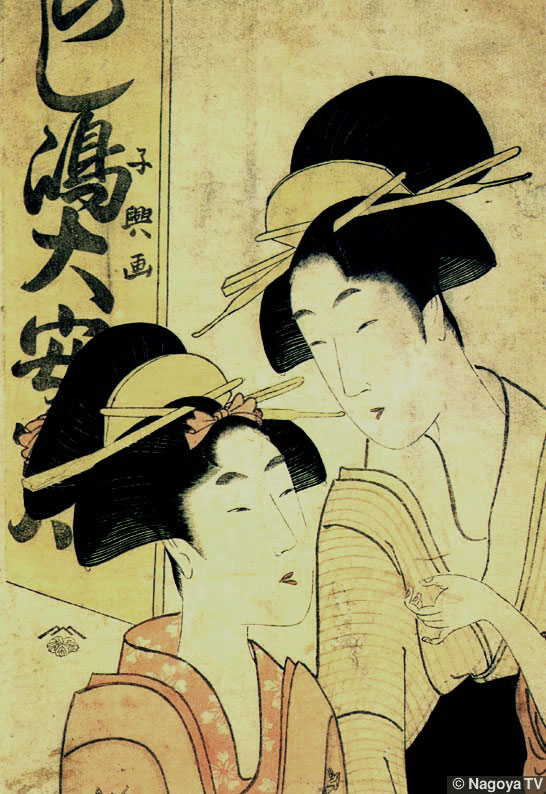
二美人 栄松斎長喜(えいしょうさいちょうき 18世紀末-19世紀初)
Two beauties Eishousai, Chouki (the end of 18th century to the beginning of 19th century)
栄松斎長喜は、歌麿とほぼ同時代、親しみやすい女性表現によって人気を博した。歌麿ほど艶っぽくなく、その庶民的な笑顔は魅力的である。
Chouki Eishousai, who was from around the same time as Utamaro, gained popularity from his expression of more amiable women. Not as sensual as those of Utamaro's, the folksy smile is quite attractive.
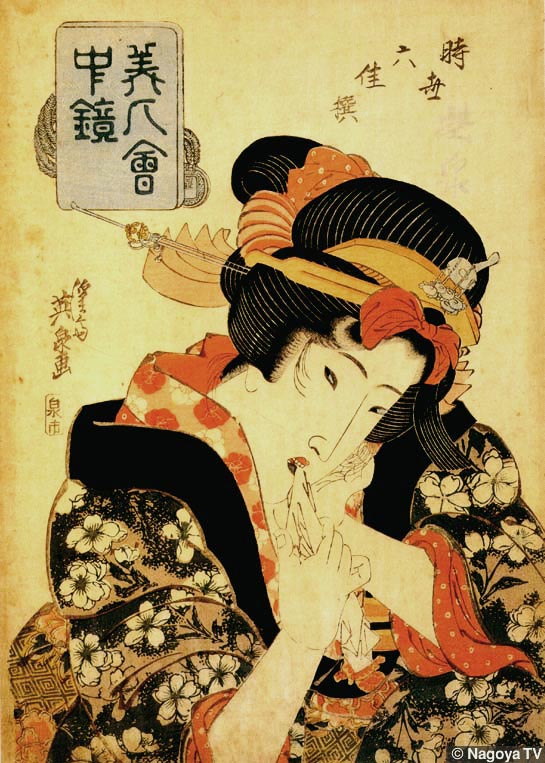
美人会中鏡 時世六歌撰 娘 溪斎英泉(けいさいえいせん 1791-1848)
Daughter, from the series "Six modern beauties" Keisai, Eisen (1791-1848)
射差すような視線、首をかしげ、挑発するようなポーズ、遊里の事情に精通した英泉美人画の典型である。幕末の頽廃的な世相を反映してもいる。
The sidelong glance, tilted neck, and provacative posture is a typical example of Eisen's beauty prints, depicting women with their street-wise ways of the red-light district. It is also a reflection of the decadence during the end of the Edo Period.
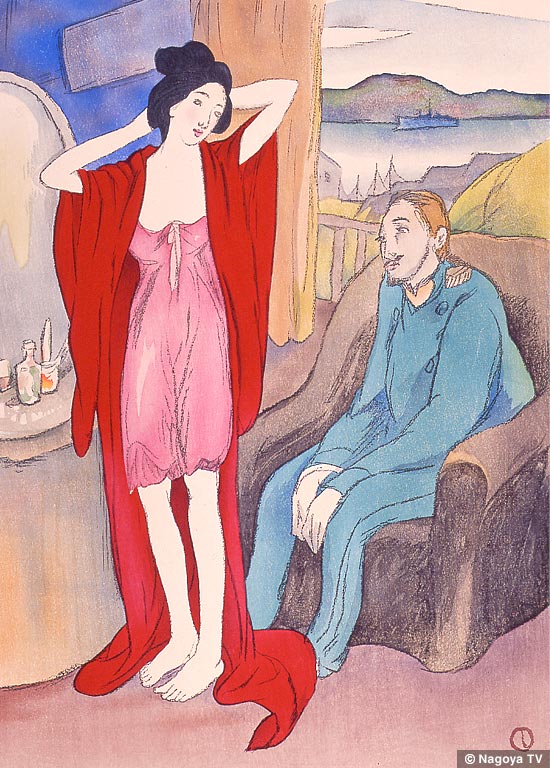
長崎風俗十二景のうち 竹久夢二(1884-1934)
From the series twelve views of the Nagasaki red-light district. Takehisa, Yumeji (1884-1934)
大正ロマンを代表する画家夢二は、異国趣味をうまく取り入れ、さりげないエキゾチックさをかもしだしてくる。
Yumeji, who represents Romanticism during the Taisho Era, incorporated foreign tastes into his work, exhibiting a casual exoticism.
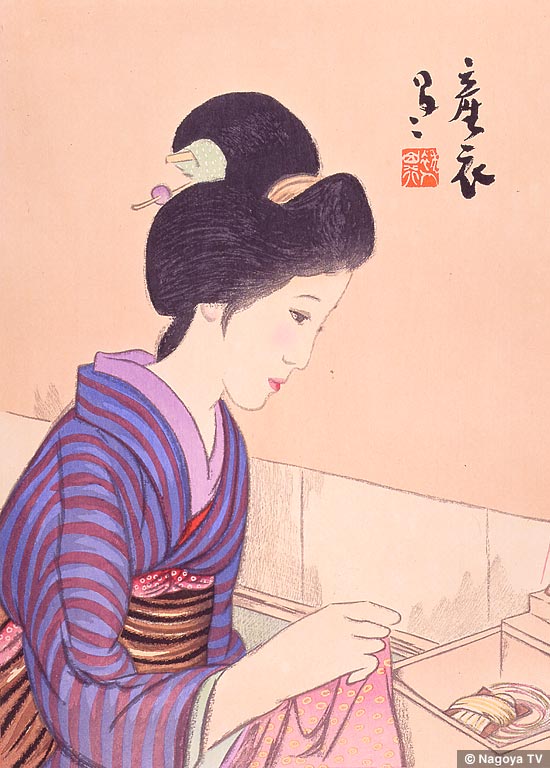
産衣 竹久夢二(1884-1934)
New-born clothes Takehisa, Yumeji (1884-1934)
つぶらな瞳の愁いを帯びた「夢二美人」である。産着を縫っているのであろう。哀愁ただよう表情が魅力的である。
The lovely black eyes of grief are those of the "Yumeji Beauties." She is probably sewing new-born clothes. Her sorrowful expression is attractive.

